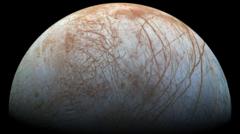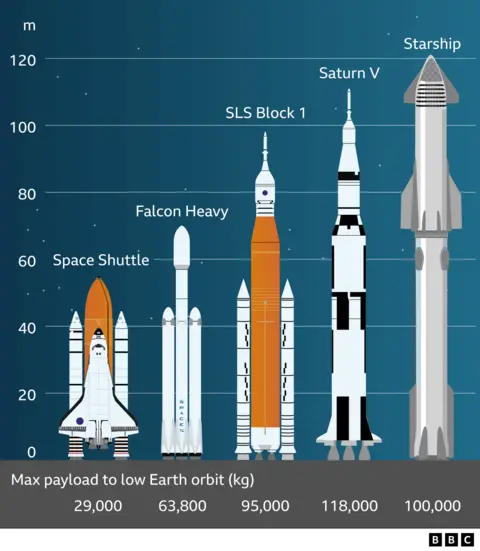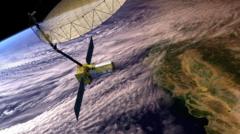The launch of NASA's Europa Clipper spacecraft from Florida marks the beginning of an ambitious mission to explore Jupiter's enigmatic moon, Europa, for signs of extraterrestrial life. Developed over several years at NASA's Jet Propulsion Laboratory, the spacecraft, delayed slightly by Hurricane Milton, is now ready for lift-off. Once launched, it will undertake a long journey, using Earth's and Mars's gravitational pull to propel itself toward its icy destination. Scientists are intrigued by Europa's potential to harbor life, with a subsurface ocean thought to exist beneath its bright, icy crust.
If successful, the mission could reshape our understanding of life's possibilities within our solar system. Equipped with advanced instruments, the Clipper will scrutinize Europa's surface, aiming to collect data as it flies through water plumes and maps the moon's icy terrain. While previous missions, like NASA's Galileo, provided intriguing leads, none have had sufficient proximity or duration to unravel Europa's mysteries fully. The quest isn't to find human-like beings, but rather, to uncover the conditions necessary for life to exist, examining water, heat, and organic materials' stability in Europa's unique environment.
The mission's science team, a collaboration of international experts, emphasizes exploration and discovery's spirit rather than commercial profit. The Europa Clipper's venture stands as a testament to human curiosity and the relentless pursuit of expanding our cosmic frontier knowledge. As the spacecraft embarks on its five-and-a-half-year journey to Jupiter, the world waits in anticipation for the groundbreaking insights it might unlock about life beyond Earth.
If successful, the mission could reshape our understanding of life's possibilities within our solar system. Equipped with advanced instruments, the Clipper will scrutinize Europa's surface, aiming to collect data as it flies through water plumes and maps the moon's icy terrain. While previous missions, like NASA's Galileo, provided intriguing leads, none have had sufficient proximity or duration to unravel Europa's mysteries fully. The quest isn't to find human-like beings, but rather, to uncover the conditions necessary for life to exist, examining water, heat, and organic materials' stability in Europa's unique environment.
The mission's science team, a collaboration of international experts, emphasizes exploration and discovery's spirit rather than commercial profit. The Europa Clipper's venture stands as a testament to human curiosity and the relentless pursuit of expanding our cosmic frontier knowledge. As the spacecraft embarks on its five-and-a-half-year journey to Jupiter, the world waits in anticipation for the groundbreaking insights it might unlock about life beyond Earth.



















